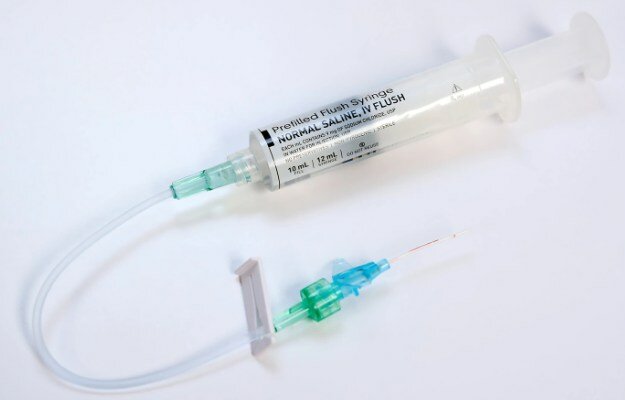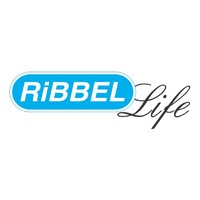New Surface Selection Algorithm Helps Prevent Pressure Ulcers
|
By HospiMedica International staff writers Posted on 21 Apr 2015 |

Image: Suggested support surface tables of the new algorithm – table A (Photo courtesy of WOCN).

Image: Suggested support surface tables of the new algorithm – Table B (Photo courtesy of WOCN).
A new study presents a consensus algorithm that takes the guesswork out of choosing a bed surface to help treat and prevent pressure ulcers (PUs).
The Evidence-and Consensus-Based Support Surface Algorithm, developed by a team of 20 clinical experts led by the Wound, Ostomy, and Continence Nurses Society (WOCN; Mount Laurel, NJ, USA), distills more than 20 years of published research into an easy-to-navigate visual decision tree that clinicians can easily use to guide bed surface selection in the hospital. Users enter the algorithm at the point of the initial skin assessment, followed by PU risk assessment. Based on the Braden score, or presence of PUs, users follow pathways that guide clinical decision making for support surface use.
Support surface selections—based primarily on Braden moisture and mobility subscale scores—are provided, as well as guidance regarding performance of skin and PU risk reassessments, determining the need for a change in or removal from a support surface, and support surface considerations and contraindications. The consensus panel members acknowledged the need for individual facilities to adapt the algorithm by including the specific products used at their facility, along with appropriate staff education. The study describing the new algorithm was published in the January/February 2015 issue of Journal of Wound Ostomy Continence Nursing.
“We all saw a clear need for this tool. This algorithm will contribute to patient outcomes in hospitals around the country. Clinicians know and guidelines emphasize the importance of surface selection to protect patients from pressure ulcers,” said lead author and Laurie McNichol, RN, of Wesley Long Hospital (Greensboro, NC, USA). “Yet a comprehensive review of the available research was lacking. Clinicians needed a validated approach to maximizing the potential benefits of choosing a surface to treat and protect our patients.”
Support surfaces comprise a variety of overlays, mattresses, and integrated bed systems used to redistribute pressure, reduce shearing forces, and control heat and humidity. The use of support surfaces is included in nearly all evidence-based clinical practice guidelines as a component of comprehensive PU prevention programs and treatment recommendations.
Related Links:
Wound, Ostomy and Continence Nurses Society
The Evidence-and Consensus-Based Support Surface Algorithm, developed by a team of 20 clinical experts led by the Wound, Ostomy, and Continence Nurses Society (WOCN; Mount Laurel, NJ, USA), distills more than 20 years of published research into an easy-to-navigate visual decision tree that clinicians can easily use to guide bed surface selection in the hospital. Users enter the algorithm at the point of the initial skin assessment, followed by PU risk assessment. Based on the Braden score, or presence of PUs, users follow pathways that guide clinical decision making for support surface use.
Support surface selections—based primarily on Braden moisture and mobility subscale scores—are provided, as well as guidance regarding performance of skin and PU risk reassessments, determining the need for a change in or removal from a support surface, and support surface considerations and contraindications. The consensus panel members acknowledged the need for individual facilities to adapt the algorithm by including the specific products used at their facility, along with appropriate staff education. The study describing the new algorithm was published in the January/February 2015 issue of Journal of Wound Ostomy Continence Nursing.
“We all saw a clear need for this tool. This algorithm will contribute to patient outcomes in hospitals around the country. Clinicians know and guidelines emphasize the importance of surface selection to protect patients from pressure ulcers,” said lead author and Laurie McNichol, RN, of Wesley Long Hospital (Greensboro, NC, USA). “Yet a comprehensive review of the available research was lacking. Clinicians needed a validated approach to maximizing the potential benefits of choosing a surface to treat and protect our patients.”
Support surfaces comprise a variety of overlays, mattresses, and integrated bed systems used to redistribute pressure, reduce shearing forces, and control heat and humidity. The use of support surfaces is included in nearly all evidence-based clinical practice guidelines as a component of comprehensive PU prevention programs and treatment recommendations.
Related Links:
Wound, Ostomy and Continence Nurses Society
Latest Patient Care News
- Revolutionary Automatic IV-Line Flushing Device to Enhance Infusion Care
- VR Training Tool Combats Contamination of Portable Medical Equipment
- Portable Biosensor Platform to Reduce Hospital-Acquired Infections
- First-Of-Its-Kind Portable Germicidal Light Technology Disinfects High-Touch Clinical Surfaces in Seconds
- Surgical Capacity Optimization Solution Helps Hospitals Boost OR Utilization

- Game-Changing Innovation in Surgical Instrument Sterilization Significantly Improves OR Throughput
- Next Gen ICU Bed to Help Address Complex Critical Care Needs
- Groundbreaking AI-Powered UV-C Disinfection Technology Redefines Infection Control Landscape
- Clean Hospitals Can Reduce Antibiotic Resistance, Save Lives
- Smart Hospital Beds Improve Accuracy of Medical Diagnosis
- New Fast Endoscope Drying System Improves Productivity and Traceability
- World’s First Automated Endoscope Cleaner Fights Antimicrobial Resistance
- Portable High-Capacity Digital Stretcher Scales Provide Precision Weighing for Patients in ER
- Portable Clinical Scale with Remote Indicator Allows for Flexible Patient Weighing Use
- Innovative and Highly Customizable Medical Carts Offer Unlimited Configuration Possibilities
- Biomolecular Wound Healing Film Adheres to Sensitive Tissue and Releases Active Ingredients
Channels
Surgical Techniques
view channel
Robotic Assistant Delivers Ultra-Precision Injections with Rapid Setup Times
Age-related macular degeneration (AMD) is a leading cause of blindness worldwide, affecting nearly 200 million people, a figure expected to rise to 280 million by 2040. Current treatment involves doctors... Read more
Minimally Invasive Endoscopic Surgery Improves Severe Stroke Outcomes
Intracerebral hemorrhage, a type of stroke caused by bleeding deep within the brain, remains one of the most challenging neurological emergencies to treat. Accounting for about 15% of all strokes, it carries... Read morePatient Care
view channel
Revolutionary Automatic IV-Line Flushing Device to Enhance Infusion Care
More than 80% of in-hospital patients receive intravenous (IV) therapy. Every dose of IV medicine delivered in a small volume (<250 mL) infusion bag should be followed by subsequent flushing to ensure... Read more
VR Training Tool Combats Contamination of Portable Medical Equipment
Healthcare-associated infections (HAIs) impact one in every 31 patients, cause nearly 100,000 deaths each year, and cost USD 28.4 billion in direct medical expenses. Notably, up to 75% of these infections... Read more
Portable Biosensor Platform to Reduce Hospital-Acquired Infections
Approximately 4 million patients in the European Union acquire healthcare-associated infections (HAIs) or nosocomial infections each year, with around 37,000 deaths directly resulting from these infections,... Read moreFirst-Of-Its-Kind Portable Germicidal Light Technology Disinfects High-Touch Clinical Surfaces in Seconds
Reducing healthcare-acquired infections (HAIs) remains a pressing issue within global healthcare systems. In the United States alone, 1.7 million patients contract HAIs annually, leading to approximately... Read moreHealth IT
view channel
Printable Molecule-Selective Nanoparticles Enable Mass Production of Wearable Biosensors
The future of medicine is likely to focus on the personalization of healthcare—understanding exactly what an individual requires and delivering the appropriate combination of nutrients, metabolites, and... Read moreBusiness
view channel
Philips and Masimo Partner to Advance Patient Monitoring Measurement Technologies
Royal Philips (Amsterdam, Netherlands) and Masimo (Irvine, California, USA) have renewed their multi-year strategic collaboration, combining Philips’ expertise in patient monitoring with Masimo’s noninvasive... Read more
B. Braun Acquires Digital Microsurgery Company True Digital Surgery
The high-end microsurgery market in neurosurgery, spine, and ENT is undergoing a significant transformation. Traditional analog microscopes are giving way to digital exoscopes, which provide improved visualization,... Read more
CMEF 2025 to Promote Holistic and High-Quality Development of Medical and Health Industry
The 92nd China International Medical Equipment Fair (CMEF 2025) Autumn Exhibition is scheduled to be held from September 26 to 29 at the China Import and Export Fair Complex (Canton Fair Complex) in Guangzhou.... Read more














